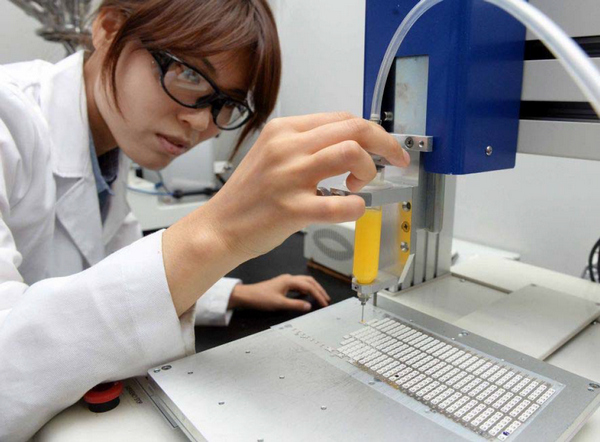WACKER, the Munich-based chemical company, has developed new encapsulants for light emitting diodes (LED) and optical components. The compounds are made of highly transparent silicone elastomers with a high refractive index. The products withstand high operating temperatures and strong light radiation without yellowing. That makes them ideal for manufacturing LEDs with high light efficiency. They also protect the LED chip against corrosive gases, which greatly extends the component’s service life. The silicone encapsulation compounds can be processed in industrial metering processes such as dispensing.
 |
|
WACKER, the Munich-based chemical company, presents two new HRI silicones for encapsulating high-performance LEDs. The encapsulants stand out due to their high refractive index, excellent transparency and low gas permeability. (Wacker/LEDinside) |
LUMISIL® 590 and LUMISIL® 591 are highly transparent, addition-curing silicone elastomers with a refractive index of 1.53, which means they rank among the high-refractive-index (HRI) encapsulants. Such grades are particularly suitable for manufacturing highly efficient LEDs. The HRI silicone protects the sensitive LED chip against mechanical influences and corrosive gases. At the same time, the silicone’s high refractive index enables optimum light efficiency.
Semiconductor chips used to generate light in LEDs have a high refractive index. To maximize the amount of light emitted by the LED chip that can pass through the encapsulation, the refractive index of the chip and encapsulant must be roughly the same value. Thanks to their refractive index of 1.53, LUMISIL® 590 and LUMISIL® 591 make LEDs highly efficient. What’s more, the highly transparent silicones are almost completely transparent for light in the visible spectral range (approx. 400 to 700 nm) and do not yellow even when radiation is extremely intense. Transmission tests with LUMISIL® 590 show that a one-millimeter-thick layer lets over 91 percent of visible light through.
LUMISIL® 590 and LUMISIL® 591 protect the LED chip reliably against environmental influences. Corrosive gases such as hydrogen sulfide can damage the LED chip and reduce its performance. Tests show that LED chips encapsulated with LUMISIL® 590 and LUMISIL® 591 are protected against such damage longer and have a prolonged service life.
The new HRI silicones are easy to process, heat-resistant and absolutely tack-free after curing. They also exhibit optimized flow and crosslinking characteristics. With a viscosity of the mix of 2,000 and 2,500 mPa*s respectively, they enable efficient, cost-effective processing. Both products are suitable for encapsulating the LED chip via contact-free dispensing processes. LUMISIL® 590 and LUMISIL® 591 form cured rubber grades of varying hardness. With a hardness of Shore A 65,
LUMISIL® 590 is relatively soft, whereas LUMISIL® 591 is formulated to be significantly harder at Shore D 40.





 CN
TW
EN
CN
TW
EN






